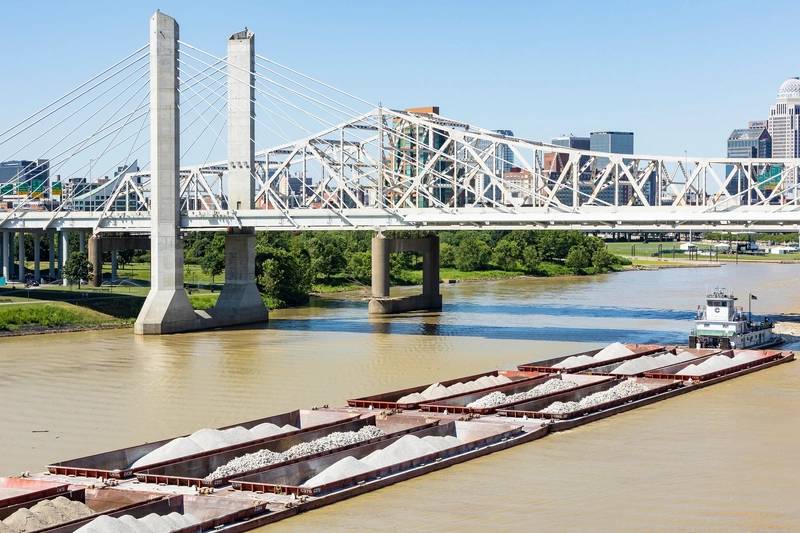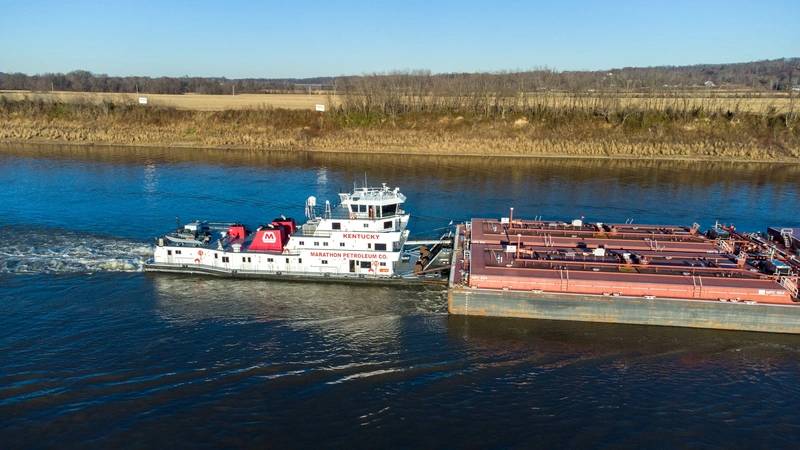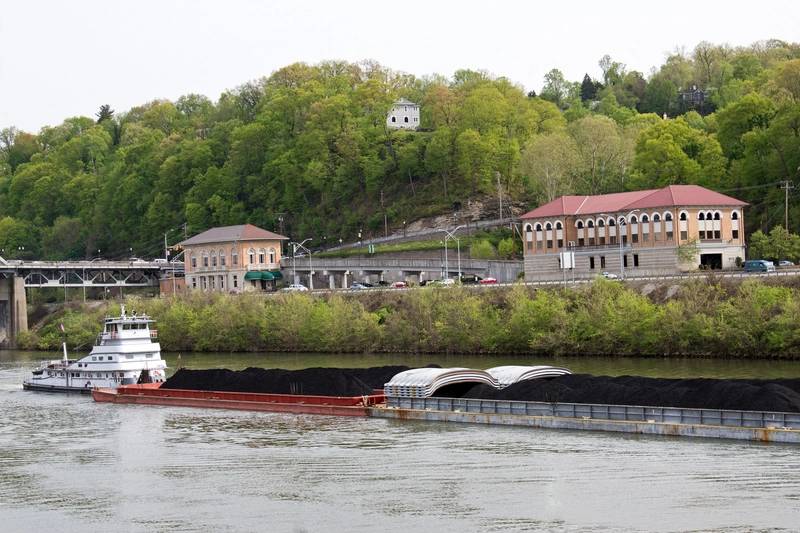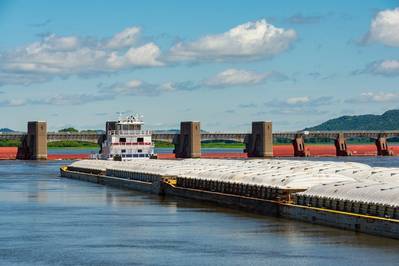Getting the Work Right: Coordinating Money, Time and Big Projects
I. Money
No one ever said it’s easy to understand federal budgets and spending plans. Nevertheless, a general sense of clarity and straightforwardness is critical for any review of public expenditures. This becomes more pressing when tracking revenue and expenditures linked to specific users’ fees, such as the $0.29/gallon fuel tax, paid by inland waterways operators. In 2021, the Inland Waterways Trust Fund (IWTF) held $221.5 million, money earmarked to build, maintain and operate the nation’s waterways infrastructure.
Big project bookkeeping is a top concern for the Inland Waterways Users Board (IWUB), a federal advisory committee. It’s especially pressing these days because of all the federal money being directed to infrastructure, e.g., new funding from the Infrastructure Investment and Jobs Act or the Bipartisan Infrastructure Law. In one sense this is one-time money, but funding plays out over the next few years. This raises questions about getting a whole lot of projects done and about maximizing project efficiency and delivery.
The U.S. Army Corps of Engineers (USACE) is the lead agency for waterways infrastructure. Corps personnel provide updates at IWUB meetings, usually held twice a year. These updates cover a range of topics, from Trust Fund revenues to reports about specific waterways and projects.
Last August the board met in Walla Walla, Wash. Indeed, money—and project spending—were top concerns. Intense and detailed discussions developed between the board and USACE staff. From this there emerged a number of board motions, formal requests that future Corps’ presentations needed to be different: more straightforward about funds and funding, individual projects and likely completion timelines (The board met in Galveston, Texas in December 2022 but the minutes for that meeting were not available for this report).
One central issue built upon the Trust Fund’s balance, about $240 million. For inland waterways projects, the Fund pays 35%, the U.S. general fund 65%. That may change to 25/75. Based on leveraging, total inland waterways funding, according to the minutes, could range from $460 to $850 million, quite a jump from $240 million. Add in one-time infrastructure funding and that total goes even higher.
Board Chairman W. Spencer Murphy with Canal Barge Company, Inc. started the discussion about budgets, projects and clarity. Murphy noted that total Trust Fund and general fund revenue should equate to around $330 million in construction each year. But actual funding, he said, is far lower, around $35 million in FY 2023. Murphy commented that “I hope we can work on ways to increase transparency about capability reporting. Ultimately, our joint success requires all of us to be on the same page and using the best possible information to bring about Congressional action.”
Martin Hettel, with American Commercial Barge Lines (ACBL), took a lead on expanding this discussion. Hettel commented that when USACE Trust Fund “numbers go from $280 million to $164 million to $317 million, [it’s] just really confusing.”
Mark Pointon is the designated federal officer (DFO) for the board. He serves a pivotal role in keeping the board aligned and coordinated with USACE’s extensive project portfolio and network. He’s tasked with keeping board meetings focused and productive.
Maj. Gen. William H. Graham, USACE, is IWUB executive director. Graham supported Murphy and Hettel’s concerns. “Internally,” Graham told the board, “we’re working on an initiative to do what the Chairman and Mr. Hettel have stated, to put more detailed schedules together, and to be able to pull those reports in an automated way, which you would expect in this day and age we should be able to do.”
The Corps is challenged on a number of fronts. Funding isn’t predictable. For example, Graham said FY22 money wasn’t available until halfway through the year making it difficult for project managers to estimate schedules.
Additionally, waterways Trust Fund accounting is not as straightforward as one might think. Trust Fund revenue is not collected via pay-at-the-pump, like highway gas taxes. Rather, waterway fuel taxes are reported by each towing company to the Internal Revenue Service (IRS). But that reporting (which is proprietary and based on a formula) only includes fuel consumed during commercial towing operations. IRS then advises the Treasury about the amount that belongs in the Trust Fund.
 © Margaret Burlingham / Adobe Stock
© Margaret Burlingham / Adobe Stock
II. Not just money: Planning and streamlining
A second board concern came up during discussion on the Capital Investment Strategy (CIS). Inflation is a new bogeyman for the Corps. Projects previously funded are now short of money. That’s important, of course, but there developed a pointed discussion on project scheduling.
Hettel, for example, referenced recent work in Illinois at Brandon Road, Dresden Island and Starved Rock. Hettel recounted system shutdowns and restrictions in 2020 and 2022. He noted upcoming work at the same sites in 2023, including 120-day closures for miter gates installations and machinery and electrical system replacement. He asked the Corps, “With all the work that you've done in 2020, what else is there to repair?”
Edward Belk, with the Corps’ Mississippi River Division responded. Indeed, he noted extensive work in the last few years and that he would double-check on upcoming work. But he added: “We owe you some information, Mr. Hettel.” During further discussion he commented that “I don’t disagree we need to plan better.”
Board member Damon Judd, with Marquette Transportation Company, suggested that the Corps’ planning could become more efficient if it avoided using resources to evaluate projects that likely would never advance. The IWUB, he said, could help with a preliminary review. “I don't know all the rules of the road,” Judd commented, “but I'd flag that as perhaps a potential opportunity to streamline.”
Thomas Smith, Chief of Operations and Regulatory Division at USACE HQ, said in reply to Judd that this idea is “something we should come talk to you about next cycle, because we have put a lot of thought into this.” He added that the Corps is exploring how to develop “a better product that can be done for a shorter period of time at less cost.”
In January, Hettel and Murphy were asked about the Corps’ follow up since the August meeting. In addition, Pointon was asked about the Corps’ efforts to respond to board members’ concerns, to provide information in a manner or format that would maximize the board’s advisory role.
 © Drew / Adobe Stock
© Drew / Adobe Stock
Good news, but work remains
The good news is that the Corps is working to revise its reporting. Both Hettel and Murphy noted the Corps’ commitment. Changes, though, were not finished for the December meeting.
Murphy commented that the Corps “cannot provide a detailed accounting of the Trust Fund balance or transfers.” Hettel said that reports at the Galveston meeting, in December, were more expansive but “still not up to what we expect on the board.”
Both Murphy and Hettel commented that the Corps’ interaction with the Treasury Department needs to be clearer. “We expect to have clarity from the Corps and Treasury ahead of the next board meeting,” Murphy said. Hettel added that the board has asked “for a representative from Treasury to be present at our next meeting.”
Pointon said that a new template was prepared for the December meeting in Galveston. That work continues, he said, and advances should be ready for the next meeting (virtual and in-person) scheduled for April 13 in Pittsburgh.
For the Corps, these are detailed and complicated presentations. The board seeks information on each project, not just the overall picture. Pointon said each project slide needs to show:
- Cost/funding overview and total and remaining costs;
- Allocations, starting in 2018, with information for FY19, 20, 21 and 22, with changes as the years progressed;
- Funding from the American Recovery and Reinvestment Act, IIJA, the Trust Fund and the general revenue fund; and,
- Remaining total project cost balance, funding to completion, estimated operation date and estimated completion date.
This accounting is not easy, and it’s not static. Pointon commented, for example, that the Omnibus Act, enacted in late December, includes FY23 appropriations for the Corps’ Civil Works program. Plans for that additional funding are under development by the Corps and the Administration. Once completed, construction schedules will change, as will reports to the board.
 © William A. Morgan / Adobe Stock
© William A. Morgan / Adobe Stock
Streamlining
Chairman Murphy said that the Galveston meeting included additional discussion on ways to improve project planning. He said the Corps is updating project cost estimates and that information should be available in April. Murphy said that process will help the board revisit streamlining because it will have a “better idea of the total costs and needs of projects.”
At the Walla Walla meeting, Murphy emphasized the importance of a strong link with the Capital Investment Strategy (CIS), which he said lays out the principles for waterways investments. He said the CIS establishes an arms-length prioritization of IWW projects. It evaluates system investments holistically, avoiding a piecemeal approach to projects and funding.
Hettel, too, is keeping an eye on streamlining. He said ACE’s proposals for lock closures and maintenance are to be presented at an upcoming operations and maintenance meeting, in February. Hettel believes this meeting will provide insight into the Corps’ new ideas about project planning.
Pointon said ACE Divisions are “proactively working with the inland waterways industry to minimize closure, to adhere to the published closure period of 120 days.” Pointon’s specific reference was to work in the Mississippi Valley Division, particularly within the Rock Island District.
Rehab versus new is an industry concern in Rock Island. There’s worry that the Administration would rather spend Trust Fund money to repair relatively ancient infrastructure and equipment rather than investing in new, e.g., new 1,200-foot chambers as authorized in the Navigation and Ecosystem Sustainability Program (NESP), a long-term program of navigation improvements and ecosystem restoration for the Upper Mississippi River System.
In an email, Pointon explained there are a lot of devils tripping-up the best laid plans. One major unknown is whether funding will be available to complete all of the work while the waterway is closed. That’s not always possible, Pointon said. The Corps seeks to align funding – from the Infrastructure Investment and Jobs Act (IIJA) or the Bipartisan Infrastructure Law (BIL) and the FY23 Omnibus Act – with project timing. Material supply – on time – presents challenges, so does component manufacturing. Additionally, as mentioned above, inflation is causing projects to come up short.
During the Walla Walla meeting Gen. Graham referred to finding the “sweet spot,” the right time-point when money, materials and closures are in alignment. Finding that sweet spot is important for both the Corps and the waterways industry.











